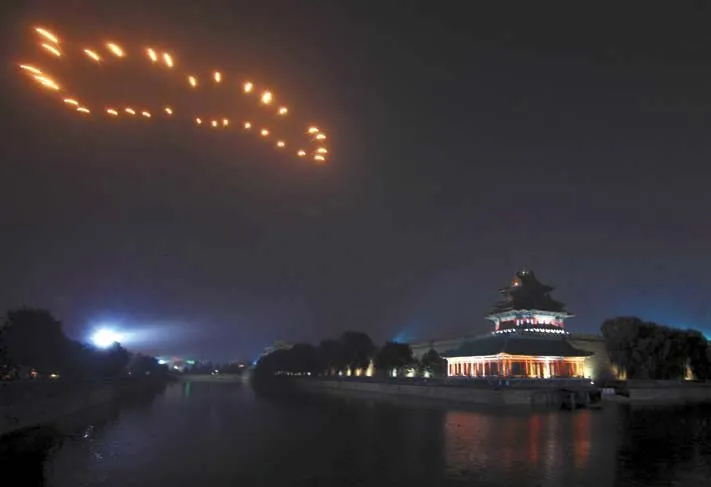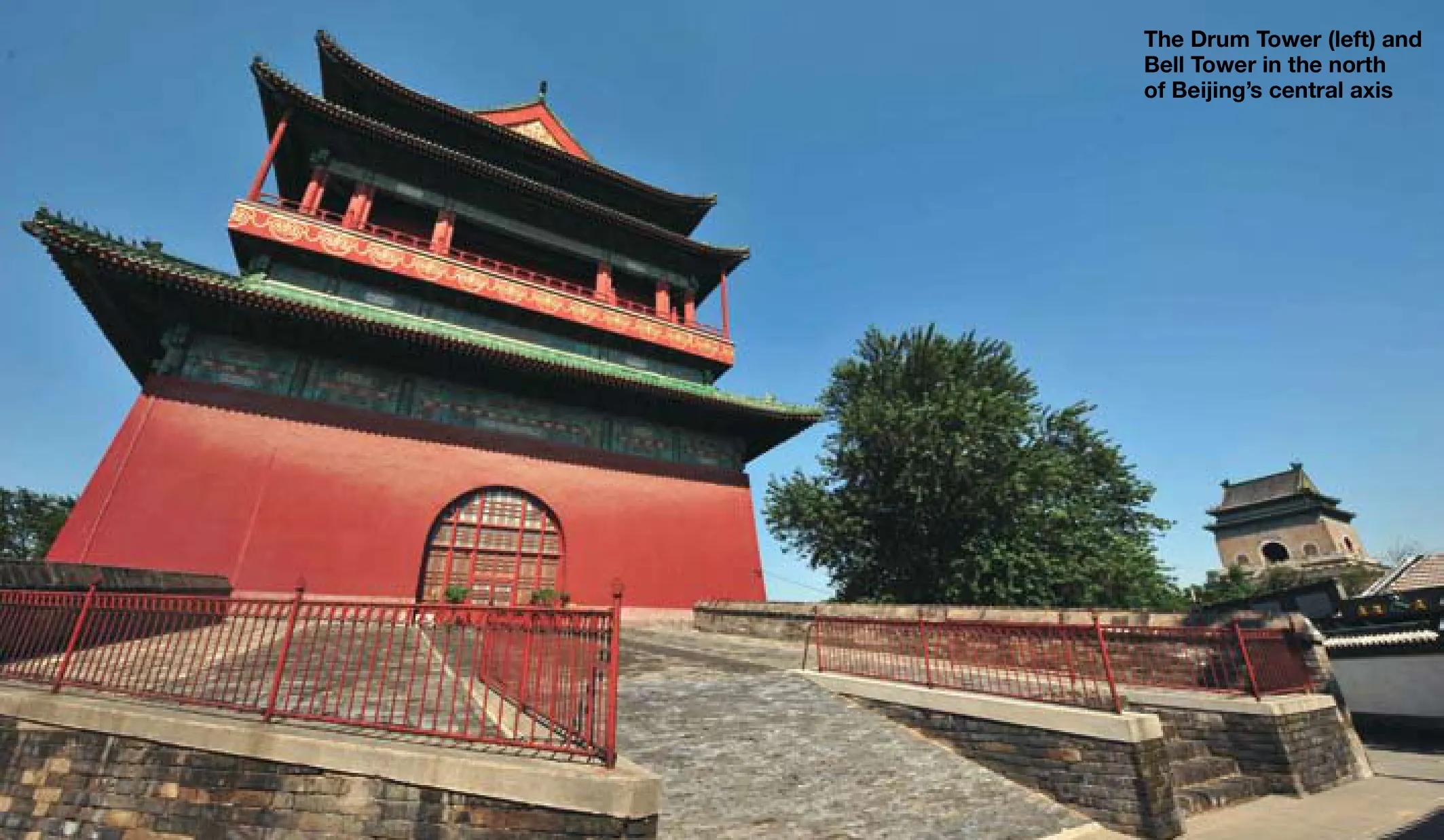Fixing Beijing’s Backbone
2011-10-16ByYULINTAO
By YU LINTAO
Fixing Beijing’s Backbone
By YU LINTAO
Capital’s central axis will be renovated as part of World Cultural Heritage status application

CREATIVE: A footprint-shaped firework lights the sky above Beijing’s Forbidden City during the 2008 Beijing Olympics opening ceremony on August 8
Whenever the layout of Beijing is mentioned, its iconic central axis will immediately come to mind. It is so important that the Beijing Government is preparing to apply for World Cultural Heritage status for Beijing’s central axis.In the next few years, the “backbone” of Beijing will be renovated. As part of this effort, Di’anmen Gate, which was demolished in 1955 will be restored.
Beijing’s central axis is quite rare in the history of world urban architecture. It starts in the south at Yongdingmen Gate and its north end is the Drum and Bell Towers.With a total length of 7.8 km, the axis passes through the nine major gates in old Beijing—Yongdingmen Gate, Zhengyangmen Gate(commonly known as Qianmen Gate today),Tiananmen Gate, Duanmen Gate, Wumen Gate, Taihemen Gate, Qianqingmen Gate,Shenwumen Gate and Di’anmen Gate.
Beijing’s unique and spectacular beauty are fully embodied by its central axis, famous Chinese architect Liang Sicheng (1901-72)once said. During the opening ceremony of the 2008 Beijing Olympic Games, the world was amazed by 29 huge fi reworks footprints that brilliantly bloomed one after another along the central axis.
In ancient times, the central axis, which was popularly known as the “dragon vein,”was seen as a royal line. According to Chinese tradition, the central axis is a fi xed line. Traditional thinking holds that the north-south axis coincides with the Earth’s meridian. A number of grand royal buildings were built along the axis with the Forbidden City at the center. Emperors in ancient China believed they were the center of the world,so all their palaces should be built there.
The axis divides the city into approximate halves, and each part was built with symmetrically arranged gates. As an important entrance into the city, a gate in the ancient time was also an important part of the city’s defense system. Though most of the gates were later demolished to accommodate traffic, their names have been preserved to designate districts of the city,including Fuchengmen, Chaoyangmen,Chongwenmen, Xuanwumen, Dongzhimen and Xizhimen.

Most of the gates along the central axis are well preserved, except for Di’anmen Gate and Yongdingmen Gate which were torn down to make way for road projects in the mid-1950s. However, Yongdingmen Gate regained its former grandeur after it was rebuilt in 2004. Now, Di’anmen Gate is the only part of the backbone that still needs to be restored.

UAJU
Di’anmen gate was first built in 1420.It is the north gate of the imperial city (a special zone surrounding the Forbidden City where ordinary people were not allowed to enter) of old Beijing while Tiananmen is the south gate. The names of these two gates in Chinese symbolize the peace of heaven and earth. Unlike the other eight gates, such as Tiananmen or Yongdingmen, Di’anmen gate was only a one-story structure. It faced the Forbidden City.
Di’anmen Gate was usually used as the entrance for emperors to pay worship to the God of Earth at the Temple of Earth in the north of the city in ancient times. On such occasion, emperors were ritually required to pass through Di’anmen Gate. In addition, when emperors went on an expedition, the gate would also be used.
“Research shows that the original site of Di’anmen Gate was located in an intersection today. Thus, experts suggest the new site should be moved slightly southward from the original spot in order to avoid hindering traf fi c,” said Kong Fanzhi,Director of the Beijing Municipal Bureau of Cultural Heritage. In March, Kong submitted the proposal to the government to rebuild the gate and renovate historical sites along the entire area of the central axis.
Kong also said the Beijing Government would establish a coordination team and an advisory group to apply for UNESCO World Culture Heritage status for the central axis.The application work will be conducted over the next fi ve years.

CFP
The idea of rebuilding Di’anmen Gate has been discussed for a long time. However,the proposal was never carried out due to traf fi c concerns as well as the fact that such a project would disturb the courtyards andhutongs there.
Besides rebuilding Di’anmen Gate,Beijing will also invest to protect other aspects of its cultural heritage. Kong said the government would spend about 150 million yuan ($23 million) each year on heritage protection over the next fi ve years.
“Starting from the renovation of the central axis, we will take the opportunity to conduct protection for all historical sites in the city. In the next fi ve years, more than 100 important historical sites will be renovated,such as the Great Wall, the Beijing section of the Grand Canal and the Summer Palace,”said Kong.
According to Kong, some historical landmarks along the central axis will possibly be rebuilt, restoring their original appearances during the Qing Dynasty (1644-1911).
